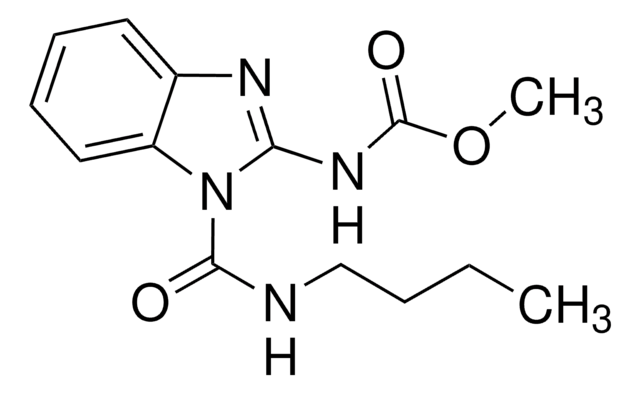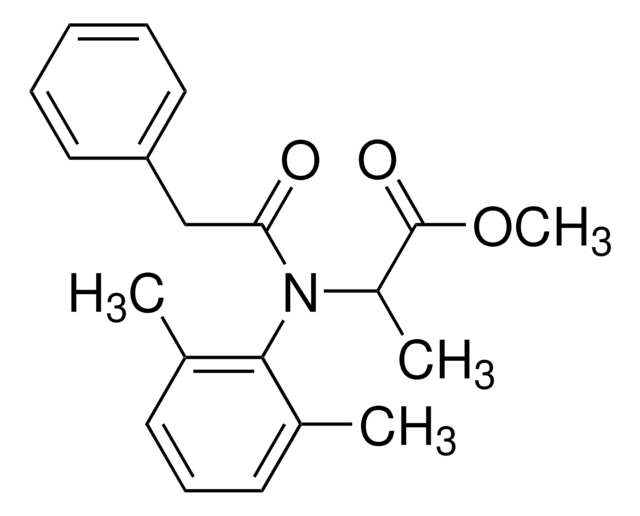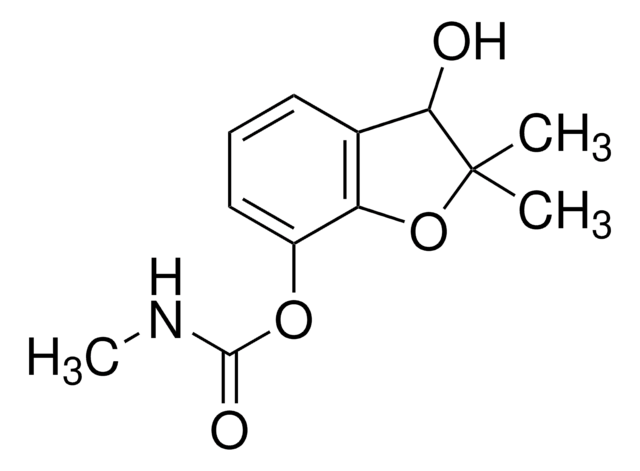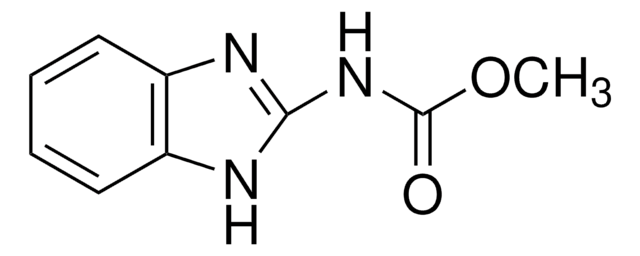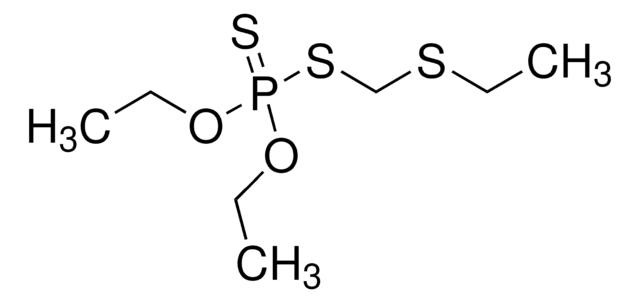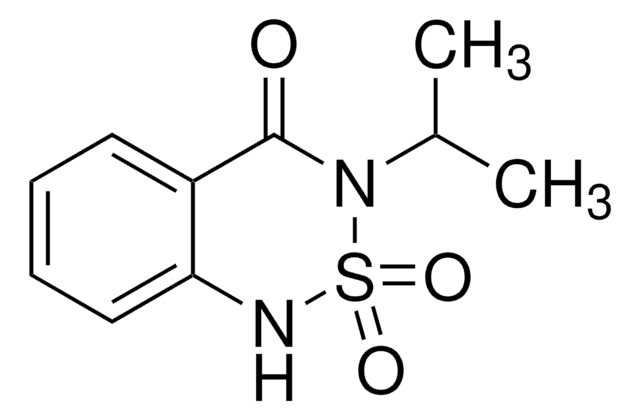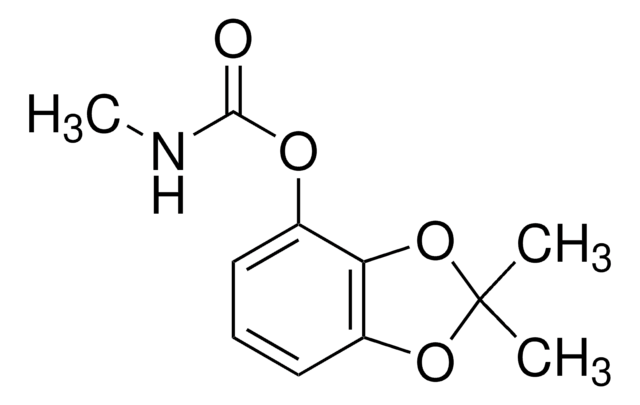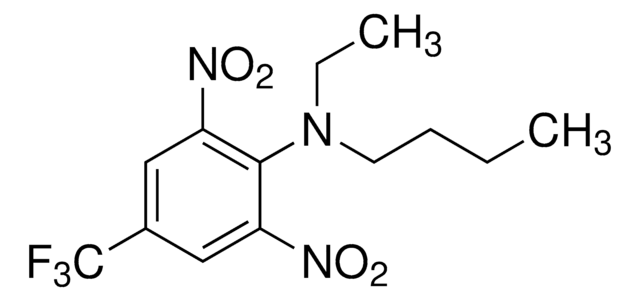31544
Benfuracarb
PESTANAL®, analytical standard
About This Item
Empfohlene Produkte
Qualität
analytical standard
Qualitätsniveau
Produktlinie
PESTANAL®
Haltbarkeit
limited shelf life, expiry date on the label
Methode(n)
HPLC: suitable
gas chromatography (GC): suitable
Format
neat
SMILES String
CCOC(=O)CCN(SN(C)C(=O)Oc1cccc2CC(C)(C)Oc12)C(C)C
InChI
1S/C20H30N2O5S/c1-7-25-17(23)11-12-22(14(2)3)28-21(6)19(24)26-16-10-8-9-15-13-20(4,5)27-18(15)16/h8-10,14H,7,11-13H2,1-6H3
InChIKey
FYZBOYWSHKHDMT-UHFFFAOYSA-N
Suchen Sie nach ähnlichen Produkten? Aufrufen Leitfaden zum Produktvergleich
Verwandte Kategorien
Allgemeine Beschreibung
Anwendung
- In bananas by application of a modified QuEChERS procedure followed by ultra high performance liquid chromatography coupled to tandem mass spectrometry (UHPLC-MS/MS).
- In honeybees, honey and bee pollen by liquid chromatography coupled to tandem mass spectrometry.
Rechtliche Hinweise
Signalwort
Danger
H-Sätze
Gefahreneinstufungen
Acute Tox. 3 Inhalation - Acute Tox. 3 Oral - Aquatic Acute 1 - Aquatic Chronic 1 - Repr. 2
Lagerklassenschlüssel
6.1C - Combustible acute toxic Cat.3 / toxic compounds or compounds which causing chronic effects
WGK
WGK 3
Flammpunkt (°F)
>212.0 °F
Flammpunkt (°C)
> 100 °C
Persönliche Schutzausrüstung
Eyeshields, Faceshields, Gloves, type ABEK (EN14387) respirator filter
Choose from one of the most recent versions:
Besitzen Sie dieses Produkt bereits?
In der Dokumentenbibliothek finden Sie die Dokumentation zu den Produkten, die Sie kürzlich erworben haben.
Unser Team von Wissenschaftlern verfügt über Erfahrung in allen Forschungsbereichen einschließlich Life Science, Materialwissenschaften, chemischer Synthese, Chromatographie, Analytik und vielen mehr..
Setzen Sie sich mit dem technischen Dienst in Verbindung.